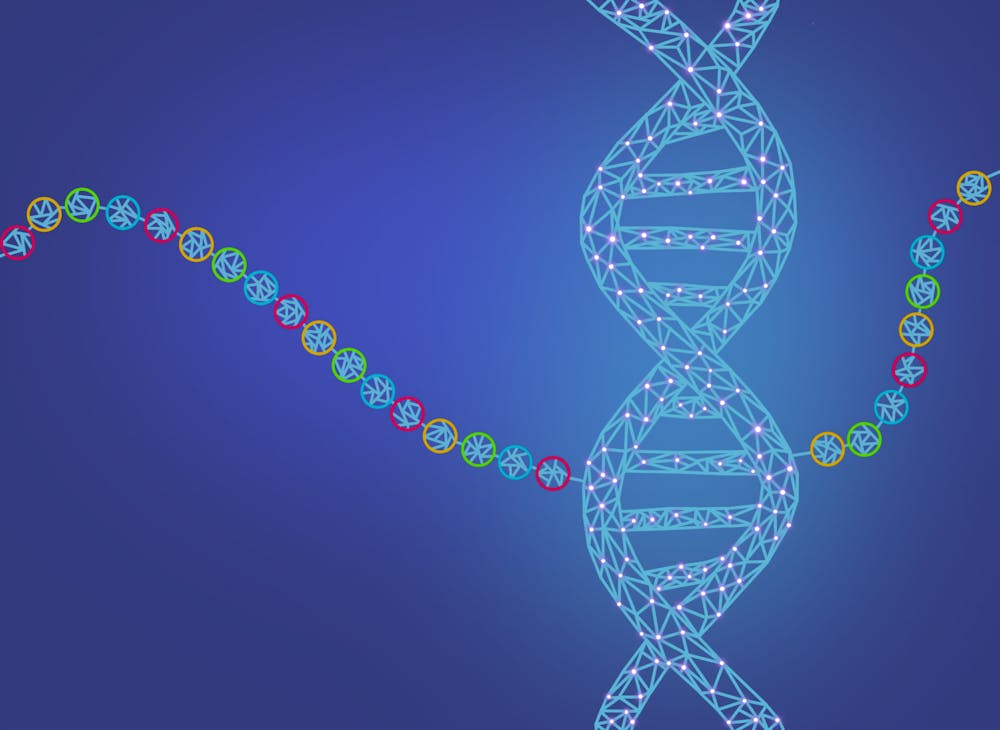A team of researchers from the University’s School of Medicine recently investigated the use of a novel gene therapy treatment called TANGO to treat Dravet syndrome, a severe form of epilepsy. Their proposal would boost the levels of a gene called SCN1A, which provides instructions for sodium channels.
Dravet Syndrome was first identified by the French epileptologist Charlotte Dravet in 1978. It affects approximately 35,000 people in the U.S., Canada, Japan, France, the U.K. and Germany.
Asst. Neurology Prof. Erika Axeen said Dravet syndrome can have wide-ranging symptoms.
“Dravet Syndrome is a rare genetic developmental and epileptic encephalopathy with symptom onset within the first year of life," Axeen said in an email statement to The Cavalier Daily. "These children often have seizures that do not respond to typical anti-seizure medications. Along with this, they can have varying degrees of developmental delay and can have intellectual disability.”
Seizures that result from Dravet syndrome typically last more than five minutes and are frequently drug-resistant.
Per Eric Wengert, postdoctoral fellow at the Children’s Hospital of Philadelphia, Dravet syndrome symptoms can extend beyond syndromes. Indeed, as many as 20 percent of those diagnosed with Dravet syndrome do not survive to adulthood.
“Dravet Syndrome is a severe genetic epilepsy syndrome that is pretty rare [and occurs] in one [out of] 16,000 people,” Wengert said in an email statement to the Cavalier Daily. “The patients not only have seizures but they also have cognitive impairment, movement disorders and other challenging comorbidities.”
The severity of Dravet syndrome lies in its drug resistance, which means patients and their families deal with substantial risk for seizures and seizure-induced sudden death.
“This drug-resistant aspect of Dravet syndrome has led to strong effort from various research teams to identify novel treatment strategies, evidenced by the fact that there have been numerous new drugs approved since 2018,” Wengert said.
Approximately 85 percent of those diagnosed with Dravet syndrome exhibit a SCN1A gene mutation. Mutated versions of SCN1A result in inefficiency of sodium channels in the brain. These malfunctions lead to irregular neuronal activity like seizures.
The research team, made up of Wengert, Asst. Anesthesiology Prof. Manoj Patel and Ian Wenker, research associate at the School of Medicine, primarily sought to reduce the detrimental effects of the mutated gene SCN1A, thereby limiting the frequency and occurrence of seizures.
“The novel gene therapy approach we investigated in the study is specifically designed to boost SCN1A levels to correct the deficits known to cause most Dravet syndrome cases,” Wengert said. “85 percent of Dravet Syndrome patients have an impaired SCN1A gene that doesn’t make functional protein.”
The team collaborated to investigate the potential of gene therapy as an alternate treatment method for patients with Dravet syndrome by restoring interneurons, missing proteins in the nerve cells. Using a particular gene therapy treatment called TANGO — Targeted Augmentation of Nuclear Gene Output — designed to boost SCN1A, the team was able to successfully induce an increase in protein production in mice.
“One of the reasons that TANGO is particularly exciting as a novel treatment strategy is that it directly addresses the genetic cause of Dravet Syndrome — loss of functional SCN1A,” Wengert said. “Because TANGO is a highly targeted gene therapy, the risk of side-effects of the treatment is thought to minimal compared to other currently available treatments.”
This innovative treatment approach was highly effective for reducing the frequency of seizures in the mouse model of Dravet Syndrome.
“At postweaning timepoints, 10 of 11 mice that did not receive TANGO exhibited seizures, whereas only 2 of 13 mice treated with TANGO had any seizures at all,” Wengert said. “Because the mice were having fewer seizures, TANGO treatment also significantly extended the survival of the Dravet syndrome mice.”
These results have implications for the future of gene therapy as a treatment approach and potential standard of care for patients with Dravet syndrome. The team's work was recently published in “Brain Research,” though further clinical studies will be needed to verify the promising preclinical work published by researchers at the University.
“The hope is that TANGO may be able to change the expression of SCN1A mRNA in a meaningful way that can reduce seizures, reduce risk of SUDEP and, hopefully, impact the developmental and cognitive delays in this patient population,” Axeen said.
Wengert is optimistic that this treatment will become convenient and accessible in the future.
“[We hope to] support the development of novel treatments for Dravet syndrome so that patients and their families will have access to better treatment options,” Wengert said.
However, the research on gene therapy does not stop here. There is still extensive experimental research needed to study TANGO for Dravet syndrome, and clinical trials are underway.
“The clinical data will provide much-needed insight into whether TANGO may actually be beneficial for human individuals with Dravet syndrome,” Wengert said.







